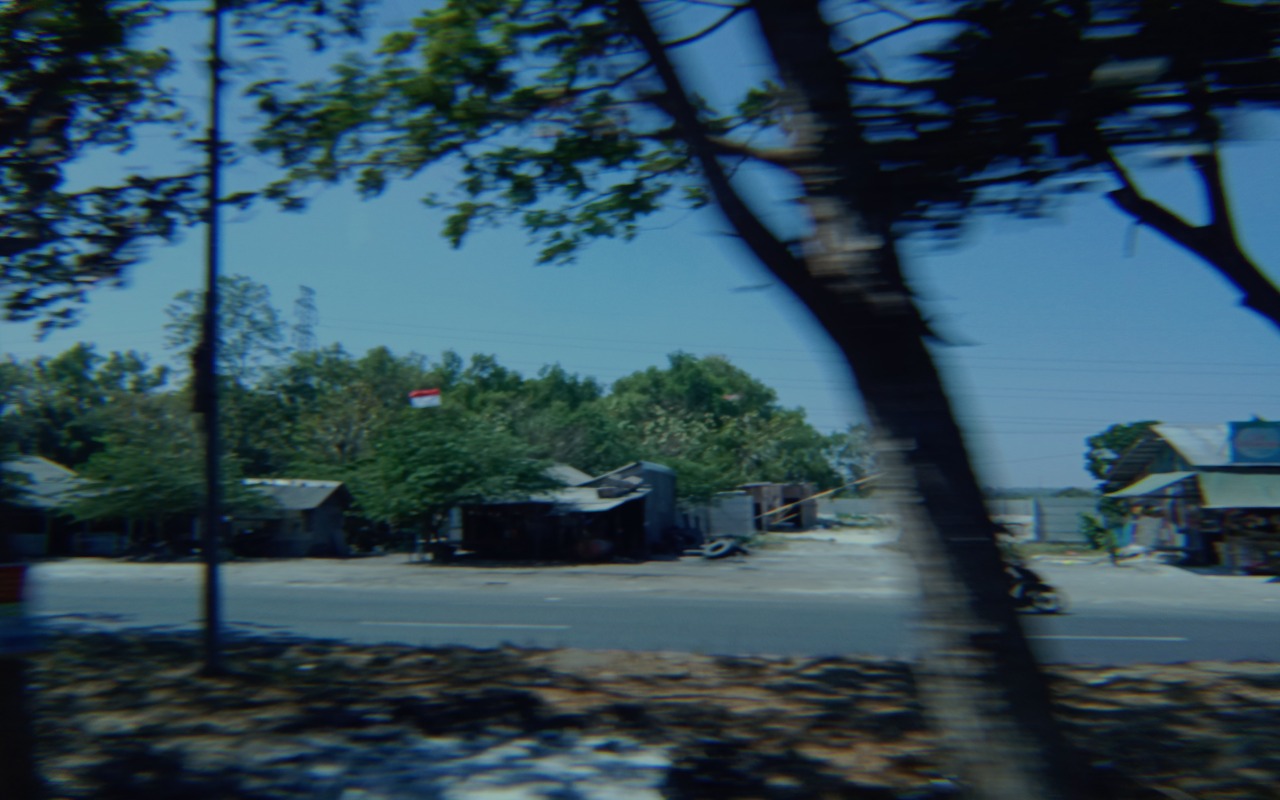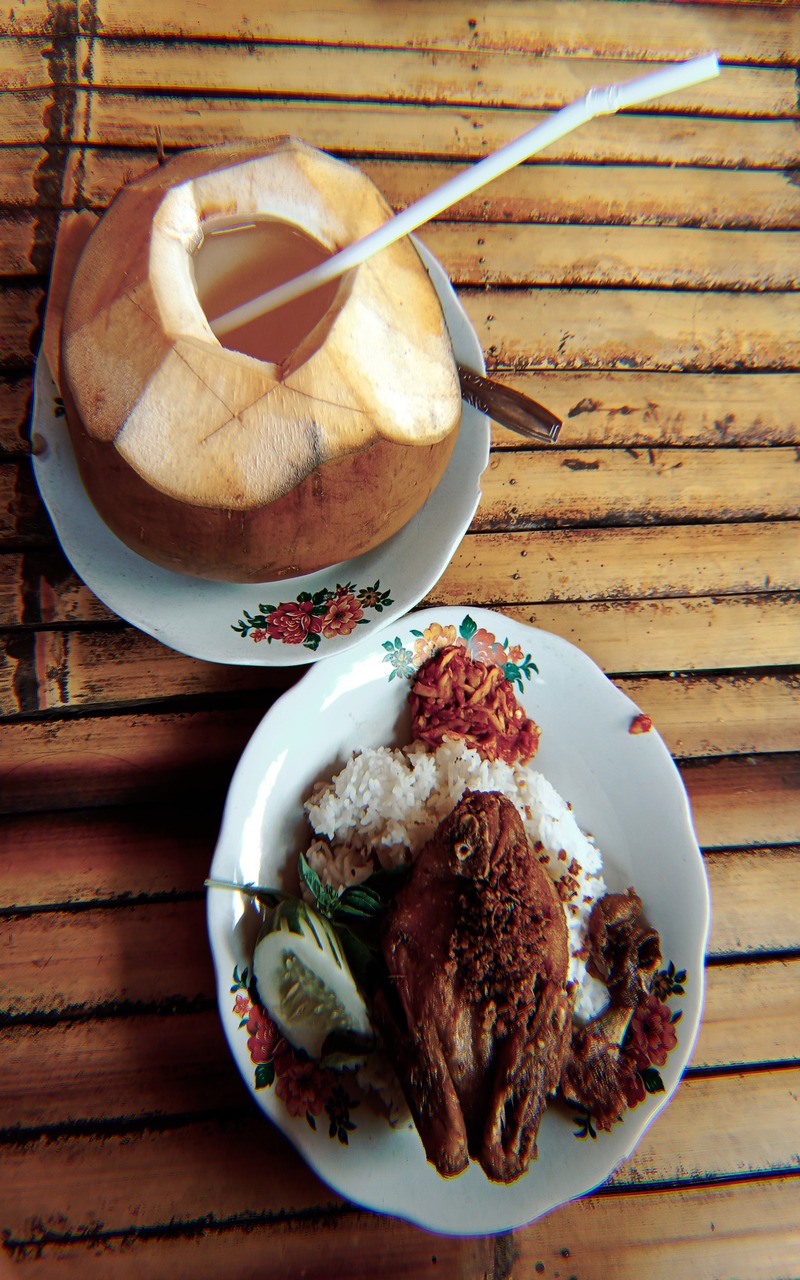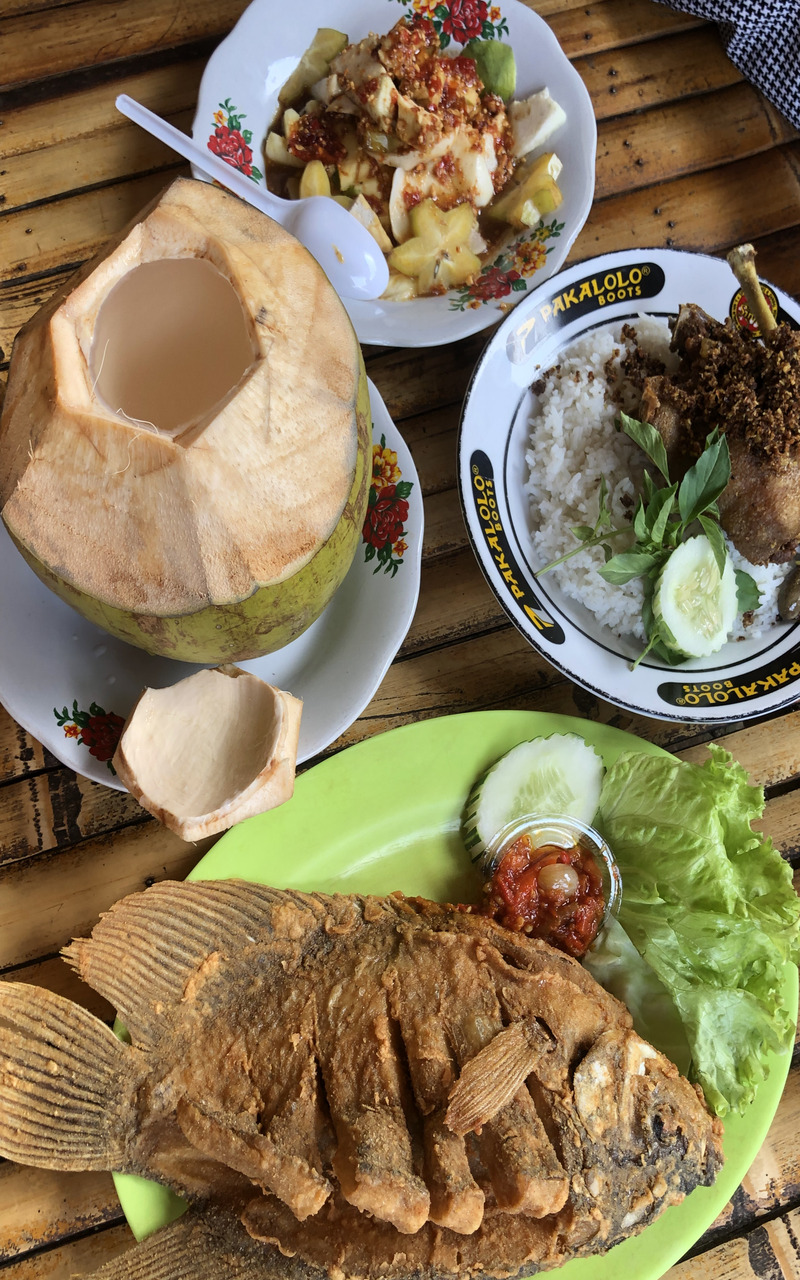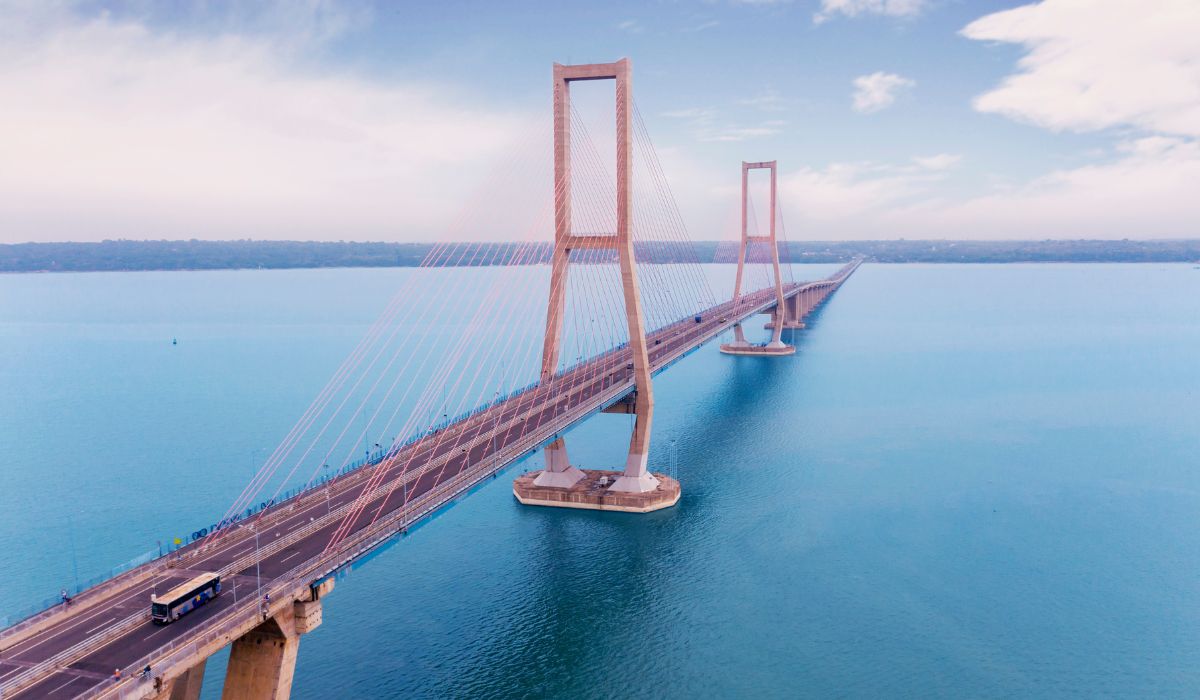After a smooth journey from Jakarta to Surabaya throughout the morning, I was left ravenous for a hearty meal. Indeed, I could get ducks anywhere in the city. I reckon it’s always best to hit up the original source of juicy, fried duck none other than in Madura.
Madura is best renowned not only for its satay but also fried duck. The legendary Warung Bebek Sinjay has turned this tiny island into a culinary icon with its serving of crunchy duck paired with a distinct, spicy chilli sauce. Feasting on this delicacy has never been more convenient for travellers because of the Suramadu Bridge's existence.
Crossing Suramadu Bridge for Bebek Sinjay
Long ago, residents of Surabaya and Madura would have to board boats and ships, patiently crossing the crowded Madura Strait to simply get on with their daily to-do lists. It wasn’t until 2003 that the Suramadu Bridge was constructed and finally functioning in 2009.
Indonesia has the “Suramadu”; an abbreviation of “Surabaya” and “Madura”. This is the country’s longest bridge to date, connecting the islands of Java and Madura spanning 5,438 metres long and 30 metres wide, consisting of three parts: an overpass, a connecting bridge, and the main bridge. With four two-way lanes, its shape is made lofty in the middle, about 35 metres above sea level, intended so that the bridge does not interfere with the traffic of the waters below.

This bridge stood firmly against the clear blue sky. The 140-metre tall tower in the middle suddenly stopped, signalling a closer look at Madura’s coastline lined with traditional wooden houses and boats docked.
The Suramadu Bridge plays a role in connecting the lives of the people of Java and Madura. I may not be a local of the two islands, nonetheless, I realised its benefit. Travel time between the islands would initially take from 30 minutes to an hour. These days, it merely takes less than 10 minutes by land! With this connectivity, the enhanced mobilisation rate has significantly impacted socio-economically.
Left and right, nothing but luscious greens and occasional glimpses of warungs adorned most of the journey to Warung Bebek Sinjay. “Surabayans normally traverse the bridge to catch the sunset while they enjoy fresh young coconut,” said Lita of MORA Group, who organised this gastronomical escapade. “That sounds good right about now,” I whispered in the back seat of the bus. Yet I wondered where the locals were. Perhaps the area looked dead because most Madurese people had migrated elsewhere in the country - they’re famed for this. Deep into the small island, I noticed where everyone was.
A spacious complex popped up. At last, I arrived at the grandeur of Warung Bebek Sinjay. The refurbished eatery is as spacious as it can get to accommodate an overflow of consumers who crave a taste of duck and much more. We walked over to the outdoor area where a row of pendopo awaited our presence.

Moments later, fresh young coconuts were laid at an empty pendopo. Such a fine refreshment for this blazing afternoon. Chatters soon faded away as plates of juicy, ginormous, succulent bebek kremes (crunchy fried duck) with a hefty portion of rice; sizzling mango sambal; soft-fried gourami fish; and sweet and sour rujak Madura graced individual pendopos.
I took a small dollop of the sambal, something that my stomach couldn’t fully handle anymore - but how could one fully get the Sinjay experience if not so? “Oh my God, it’s extremely spicy!” I exclaimed to the ladies in my pendopo. Another concurred with a sour face, unwilling to take more dollops on her plate. Meanwhile, another voiced, “Yes. Could you pass me that extra serving of sambal?” a few minutes later.
Undeniably, cutlets of mango infused with chilli produce a spicy and sour sambal, a unique blend of flavours intertwining with the savoury, crunchy fried duck. It was addictive. A few more dollops in, I quickly stopped as the insides of my stomach exerted a burning sensation. I swallowed the coconut and grated the meat inside to neutralise my burning tastebuds before continuing to savour in the rujak buah (fruit salad).

Warung Bebek Sinjay serves about 500 ducks or 4,000 portions in a day. Its phenomenon arose due to some consumers often spend a long duration waiting for their vehicles to be fixed. They searched for the nearest stall to fill their stomachs despite the rarity of food sold around the workshop. The owner, Muslehah, sought this opportunity to open a duck food stall around the workshop. It didn’t start off well until he changed the processed wet duck with soup into a dry fried duck.
The business, which has been open since 2001, steadily gained its prominence and opened branches in several areas of East Java, such as Surabaya, Malang, and Pasuruan. Warung Bebek Sinjay is open every day from 7 AM to 9 PM WIB (Western Indonesia Time).
Our bus drove through the Suramadu Bridge once again. My swollen gum-related trauma derived from eating duck a decade ago disappeared because of Warung Bebek Sinjay. Would I return? Definitely yes.




 Mirella Pandjaitan
Mirella Pandjaitan
 Aug 19, 2024
Aug 19, 2024